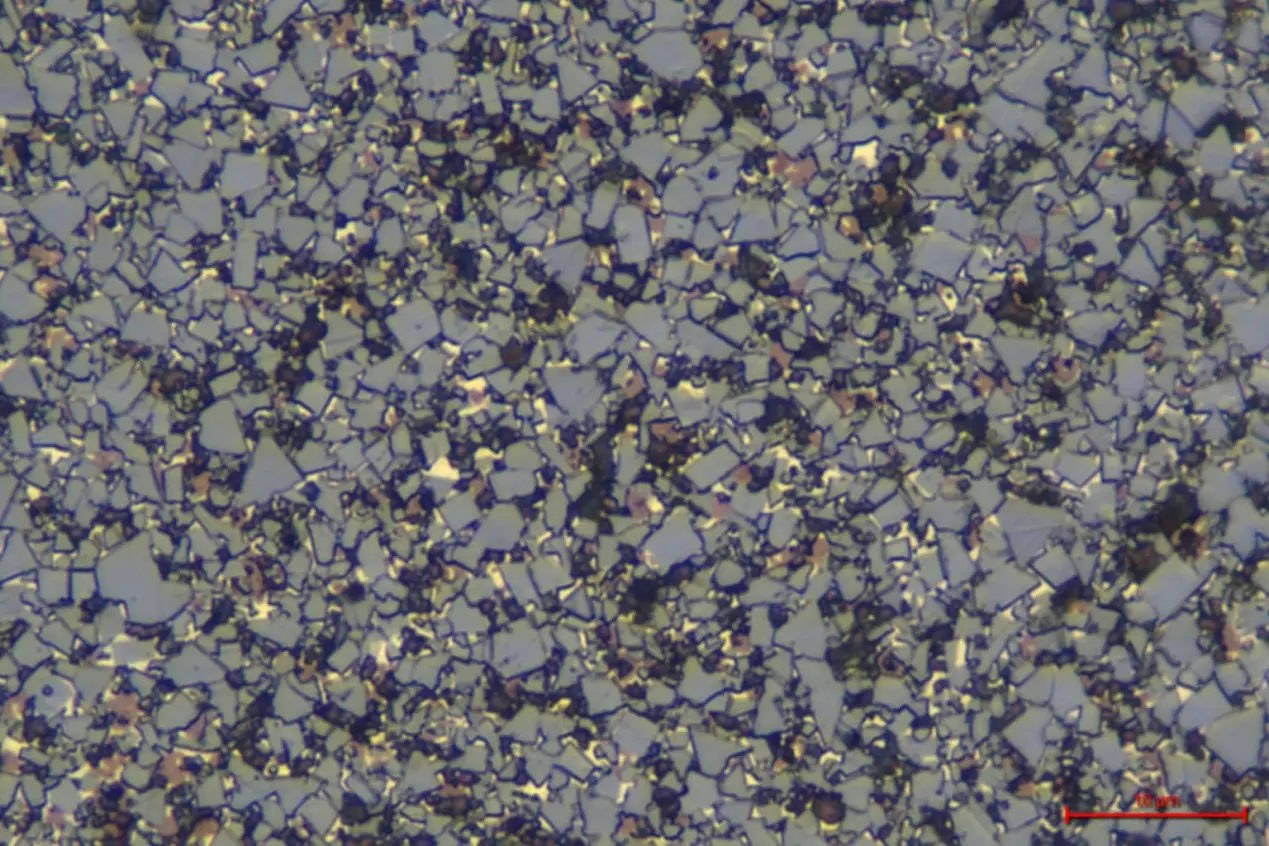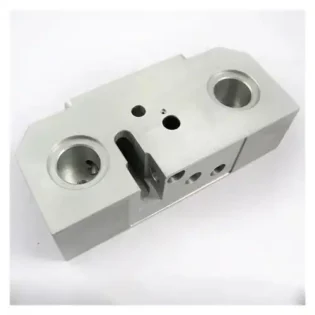Mechanism of Tool Breakage
Abrasive Wear by HardParticles
This is mainly caused by mechanical wear from impurities in the workpiece material, hard particles such as carbides, nitrides, and oxides contained in the material matrix, and fragments of built-up edge. These hard particles scratch grooves on the tool surface. Abrasive wear by hard particles occurs in tools at all cutting speeds, but it is the main cause of wear in low-speed steel tools. At low cutting temperatures, other forms of wear are not significant. It is generally believed that the amount of wear caused by abrasive wear by hard particles is proportional to the relative sliding distance or cutting distance between the tool and the workpiece.
Adhesive Wear
Adhesion refers to the bonding phenomenon that occurs when the tool and workpiece material come into contact at atomic distances. It is a so-called cold welding phenomenon that occurs due to plastic deformation on the actual contact surface of the friction surfaces under sufficient pressure and temperature. It is the result of the adhesive force between the fresh surface atoms formed by the plastic deformation of the two friction surfaces. The adhesive points on the two friction surfaces are sheared or stretched and carried away by the opposite surface due to relative motion, which causes adhesive wear.
Adhesive wear can occur on the contact surfaces between two materials, whether on the soft material side or the hard material side. Generally, the breakdown of adhesive points occurs more frequently on the side with lower hardness, i.e., the workpiece material. However, the tool material often has defects such as uneven structure, internal stresses, microcracks, pores, and local soft spots, so the carbide tool surface also frequently breaks and is carried away by the workpiece material, forming adhesive wear. High-speed steel, ceramic, cubic boron nitride, and diamond tools can all experience wear due to adhesion. The size of the carbide grains in cemented carbide has a significant impact on the speed of adhesive wear. The temperature at which the tool material and workpiece material adhere to each other greatly affects the severity of adhesive wear. Other factors such as the hardness ratio of the carbide tool to the workpiece material, the shape and structure of the tool surface, as well as cutting conditions and the stiffness of the process system, all affect adhesive wear.
Diffusion Wear
Due to the high temperatures during cutting, and the fact that the carbide tool surface is constantly in contact with the freshly cut surface, which has high chemical reactivity, the chemical elements of the two friction surfaces may diffuse into each other. This results in a change in the chemical composition of both, weakening the properties of the tool material and exacerbating the wear process. Diffusion wear increases with the rise in cutting temperature. For a given tool material, as the temperature increases, the rate of diffusion initially increases slowly and then accelerates. Different elements have different diffusion rates, so the severity of diffusion wear is greatly related to the chemical composition of the carbide tool material. Additionally, the rate of diffusion is also related to the flow velocity of the chip layer on the tool surface, which corresponds to the velocity of the chip flowing over the rake face. Slower flow velocity results in slower diffusion.
Figure 1 shows the diffusion wear of WC-Co cemented carbide, indicating that tungsten carbide (WC) and cobalt (Co) have dissolved into the surface layer of the steel, and this surface layer has also melted at the interface. In the figure, the upper layer is steel, the lower layer is cemented carbide, and the middle white layer is the melted layer, which is in a locally melted area, with WC grains surrounded within it. Because the temperature is higher at the crescent-shaped depression on the rake face, the diffusion rate is high and wear occurs quickly. At the same time, since adhesion occurs when the temperature rises to a certain degree, diffusion wear and adhesive wear often occur simultaneously, easily forming a crescent-shaped depression.

Chemical Wear
Chemical wear occurs at certain temperatures where the tool material reacts chemically with surrounding media (such as oxygen in the air, extreme pressure additives like sulfur and chlorine in cutting fluids, etc.), forming a layer of compounds with lower hardness on the tool surface, which is then carried away by the chips, accelerating tool wear; or because the tool material is corroded by a certain medium, causing tool wear.
The main types of normal tool wear include hard particle wear, adhesive wear, diffusion wear, and chemical wear, and there are interactions among them. For different tool materials, under different cutting conditions, and when machining different workpiece materials, the primary cause of wear may be one or two of these types.
Methods to Improve Tool Performance
Because it is difficult to balance the wear resistance and toughness of cemented carbide tool materials, users can only select suitable tool materials from various grades of cemented carbide based on specific machining objects and conditions, which brings inconvenience to the selection and management of cemented carbide tools. To further improve the comprehensive cutting performance of cemented carbide tool materials, current research focuses include the following aspects:
Grain Refinement
By refining the grain size of the hard phase, increasing the intergranular surface area of the hard phase, and enhancing the intergranular bonding strength, the strength and wear resistance of cemented carbide tool materials can be improved. When the WC grain size is reduced to sub-micron levels, the hardness, toughness, strength, and wear resistance of the material can all be enhanced, and the temperature required for full densification can also be reduced. The grain size of conventional cemented carbide is 3~5μm, fine-grained cemented carbide has a grain size of 1~1.5μm (micron level), and ultra-fine-grained cemented carbide can have a grain size below 0.5μm (sub-micron, nano-level). Common grain refinement processes include physical vapor deposition, chemical vapor deposition, plasma deposition, and mechanical alloying. Since these grain refinement processes are not yet mature, nano-grains easily grow into coarse grains during the sintering of cemented carbide, and the general growth of grains will lead to a decrease in material strength. Individual coarse WC grains are often a significant factor causing material fracture. On the other hand, fine-grained cemented carbide is relatively expensive, which also restricts its promotion and application.
Surface, Overall Heat Treatment, and Cycle Heat Treatment for Carbide tools
Surface treatments such as nitriding and boriding on the surfaces of cemented carbide with good toughness can effectively improve their surface wear resistance. For cemented carbide with good wear resistance but poor toughness, overall heat treatment can change the bonding composition and structure in the material, reduce the adjacency of the WC hard phase, thereby improving the strength and toughness of the cemented carbide. Using cycle heat treatment processes to alleviate or eliminate stress at the grain boundaries can comprehensively improve the overall performance of cemented carbide materials.
Addition of Rare Metals
Adding rare metal carbides such as TaC and NbC to cemented carbide materials can form complex solid solution structures with the original hard phases WC and TiC, further strengthening the hard phase structure. At the same time, it can inhibit the growth of hard phase grains and enhance the uniformity of the structure, which is greatly beneficial to improving the comprehensive performance of cemented carbide. In the standard P, K, M grades of cemented carbide, there are grades that have added Ta(Nb)C (especially more in the M grade).








